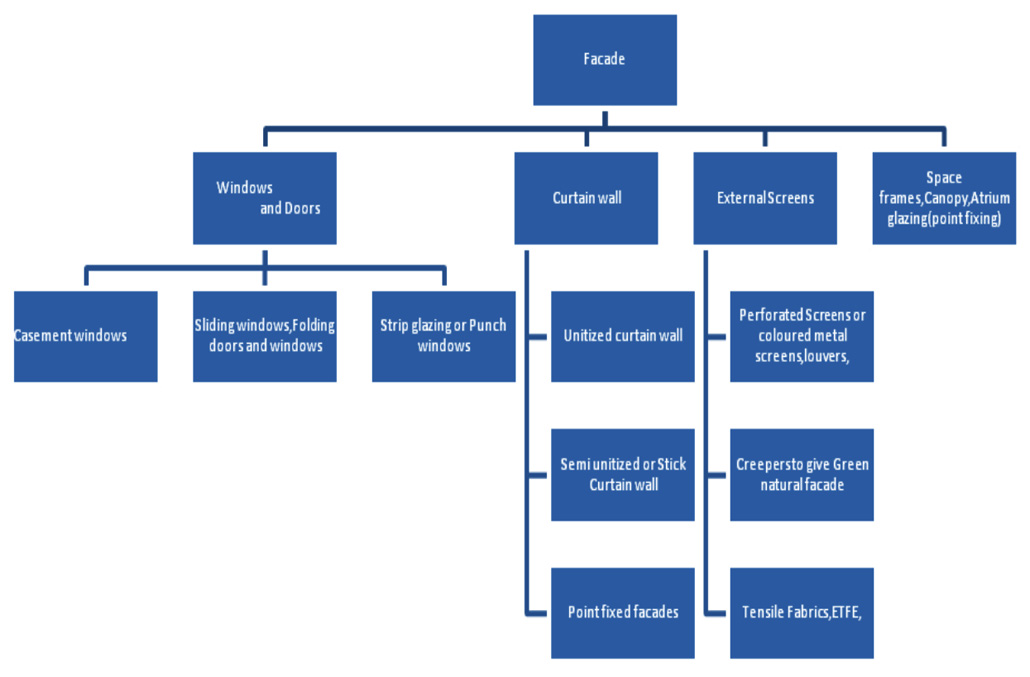

An ISO 9001:2015 Certified Company


An ISO 9001:2015 Certified Company
Being a Learning Organization and disseminating knowledge is ingrained in Ajit India Policy and this Blog is an effort in this direction.
In general, the metal curtain walls of today, even the simpler types, are far more sophisticated products than their early counterparts, though many of the earliest walls are still performing admirably. Fifty years of experience and development have eliminated the major difficulties of the pioneering designs, resulting in better products. Beginning with the relatively simple, but innovative concept of the early 1950's - a series of window units and panels joined and supported by simple framing members - metal curtain wall technology has developed, over the years, into a proliferation of highly engineered designs. Throughout this development, however, the basic principles of good curtain wall design have not changed. Recognition of these principles has grown with experience, and the criteria of good design have now become well defined. And, as with any vital and developing product, the industry continues to find ways of improving performance.
This blog is written with an earnest attempt to introduce glass and metal facades to all budding engineers, architects and engineers in construction industry.
What is a façade?
A facade or façade is generally one exterior side of a building, usually, but not always, the front. The word comes from the French language, literally meaning "frontage" or "face".
A curtain wall system is an outer covering of a building in which the outer walls are non-structural, but merely keep out the weather. As the curtain wall is non-structural it can be made of a lightweight material reducing construction costs. When glass is used as the curtain wall, a great advantage is that natural light can penetrate deeper within the building. Currently ETFE is also used instead of glass in some areas. The curtain wall façade does not carry any dead load weight from the building other than its own dead load weight. The wall transfers horizontal wind loads that are incident upon it to the main building structure through connections at floors or columns of the building. A curtain wall is designed to resist air and water infiltration, sway induced by wind and seismic forces acting on the building, and its own dead load weight forces.
Curtain Wall Systems are typically designed with extruded aluminum members, although the first curtain walls were made of steel. The aluminium frame is typically infilled with glass, which provides an architecturally pleasing building, as well as benefits such as daylighting. However, parameters related to solar gain control such as thermal comfort and visual comfort are more difficult to control when using highly-glazed curtain walls. Other common infills include: stone veneer, metal panels, louvres, and operable windows or vents.
Curtain walls differ from store-front systems in that they are designed to span multiple floors, and take into consideration design requirements such as: thermal expansion and contraction; building sway and movement; water diversion; and thermal efficiency for cost-effective heating, cooling, and lighting in the building.
All wall systems are required to resist many different forces in the provision of a suitable separation of indoor and outdoor environments. They are required to:
have sufficient structural strength and rigidity
resist the spread of fire
be durable
control odours
control light
control sound and vibration
control heat flow
control air flow
control water vapour flow
control exterior precipitation
control solar radiation
It is important that all the above requirements are taken into consideration while properly designing a curtain wall system. In case all the factors are not adequately
taken care of while designing then there is a potential for damage, either physical or financial.
Façade can be classified as follows.

The Blog will have information broadly related to the following sections.
Types, Classification of Facades and its description
Design of Facades
Different Materials used in facades
Fabrication of Facades
Installation of Facades
Quality Control in Facades
Importance of Performance Testing in Facades
Corp. Office
B 21/24, Wagle Industrial Estate.
Road No. 16, Thane West
Mumbai Maharashtra 400604